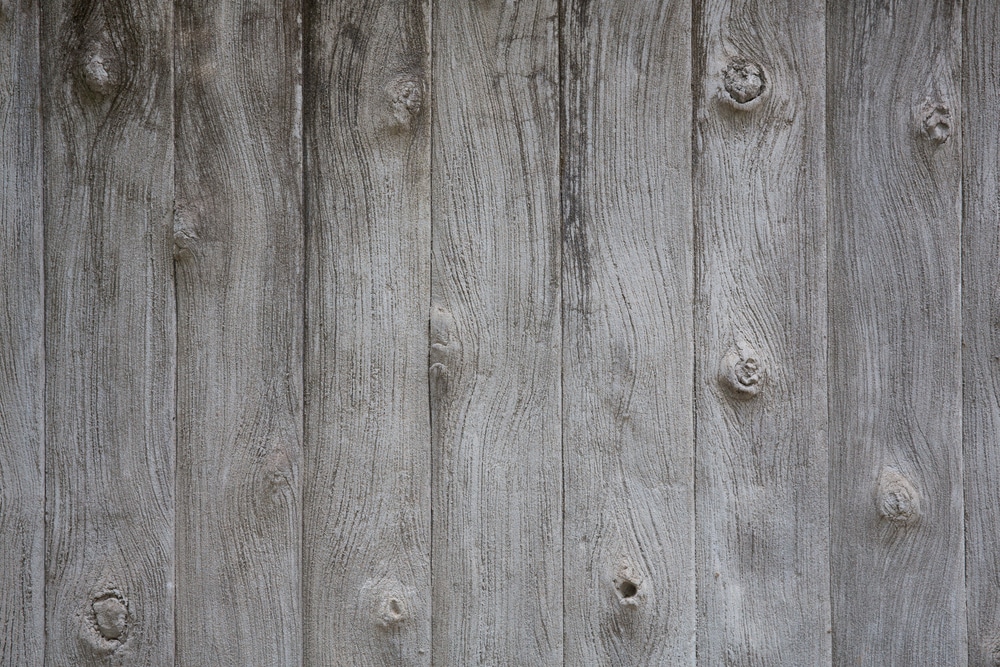A Guide on How to Clean Gasoline Spill on Concrete
August 7, 2025Gasoline spills on concrete surfaces are more common than you might think. Whether it happens while refueling lawn equipment, working on your vehicle, or storing fuel in the garage, these spills can leave behind stains, strong odors, and safety hazards. Since concrete is a porous material, gasoline can soak deep below the surface, making cleanup more difficult if not handled right away.
Quick action is critical. Gasoline releases flammable fumes, creates slip risks, and contains chemicals that can harm your concrete and the environment. The longer it sits, the deeper it penetrates, leading to lasting stains and potential structural damage.
In this guide, you will learn safe and effective methods to clean gasoline from concrete. We will cover immediate response steps, common household cleaning solutions, advanced techniques for tough stains, and tips to prevent future spills.
Immediate Response Steps for Gasoline Spills
Acting quickly and safely in the first few minutes after a gasoline spill is critical. Follow these step-by-step instructions to reduce health risks, prevent fire hazards, and begin effective cleanup:
- Avoid ignition sources immediately
- Do not attempt to clean up the spill near any open flames or sparks.
- Stay away from electrical equipment, pilot lights, running vehicles, and anything that could ignite fumes.
- Ventilate the area
- If the spill occurs in an enclosed space such as a garage, open all doors and windows right away.
- Turn off all electrical equipment and avoid flipping light switches.
- Ensure fresh air circulates to help disperse flammable fumes, which can build up quickly.
- Contain and absorb the spill
- Use an absorbent material to soak up the gasoline.
- Clay-based cat litter is especially effective, but sand, sawdust, or commercial absorbents also work.
- Spread the material generously over the entire spill area.
- Let it sit undisturbed for 15 to 20 minutes to fully absorb the gasoline.
- Clean up the absorbed material
- Sweep up the saturated absorbent carefully using a broom and dustpan.
- Wear protective gloves to avoid contact with contaminated materials.
- Avoid breathing in any lingering fumes during cleanup.
- Dispose of the waste properly
- Place the contaminated material in a sealed plastic bag or a metal container with a tight-fitting lid.
- Follow your local hazardous waste disposal guidelines.
- Never throw gasoline-contaminated materials in household trash or down drains.
Handling gasoline spills promptly and carefully can prevent long-term damage to your concrete and reduce health and safety risks. Once the area is clean and clear of fumes, you can move on to deeper cleaning methods to fully remove stains and lingering odors from the surface.
Essential Cleaning Materials and Safety Equipment
Before beginning any gasoline cleanup, gather all your tools and protective gear. Having everything ready ensures both safety and efficiency.
| Cleaning Materials | Safety Gear |
| Dish soap (grease-cutting variety) | Chemical-resistant gloves (nitrile or neoprene) |
| Baking soda (absorbent and odor neutralizer) | Safety goggles (to prevent splashes into eyes) |
| White vinegar (acidic cleaning power) | Respirator or N95 mask (to protect against harmful fumes) |
| Commercial concrete cleaner (for stubborn stains) | Old clothing or disposable coveralls (to prevent contamination) |
| Stiff-bristled brush or push broom | Closed-toe, slip-resistant shoes (for foot protection and stability) |
| Buckets (for mixing cleaning solutions) | Long sleeves and pants (to protect skin from chemical exposure) |
| Garden hose with good water pressure | Head covering (optional, for added protection from splashes) |
| Clean rags or paper towels | |
| Extra absorbent material (clay cat litter, sand, or sawdust) |
Always work in a well-ventilated area and make sure your safety gear fits properly. This ensures both comfort and protection throughout the cleaning process.
Step-by-Step Cleaning Methods
Not all gasoline stains are the same. The cleaning method you choose should depend on how fresh the spill is and how deep it has penetrated. Start with the least aggressive option and move up as needed.
Level 1: Dish Soap and Warm Water
This is the most accessible method and works best for fresh spills.
- Mix one gallon of warm water with 1/4 cup of grease-cutting dish soap.
- Pour the solution over the stained area and let it sit for 10 to 15 minutes.
- Scrub thoroughly with a stiff-bristled brush in circular motions.
- Rinse with a garden hose using strong water pressure.
- Repeat if the stain or odor persists before moving to the next level.
Level 2: Baking Soda Paste
Use this method if the soap and water combo doesn’t fully remove the stain.
- Make a paste using baking soda and a small amount of water. It should be thick enough to stick to the concrete.
- Apply the paste generously over the stain, extending beyond the edges.
- Let it sit for 30 minutes to several hours depending on the severity.
- Scrub with a stiff brush and rinse with water.
- Baking soda also helps neutralize odors while lifting out deeper gasoline residue.
Level 3: Commercial Degreasers
If DIY methods fail, turn to a concrete-specific degreaser.
- These products are formulated to break down petroleum compounds that household cleaners can’t touch.
- Follow label instructions carefully for mixing, application, and safety.
- A recent customer used a degreaser after struggling with a month-old garage stain. With one application, the stain was completely gone within 24 hours.
- Always wear gloves and protective gear when using chemical cleaners, and ventilate the area well.
Each method increases in strength and effectiveness. If you start simple and still see staining or odor, don’t get discouraged. Gradually working your way up from soap to degreasers gives you the best chance at restoring your concrete safely without causing surface damage. Always finish with a full rinse and let the area dry completely before use.
Advanced Cleaning Techniques for Stubborn Stains
When basic soap and water methods prove insufficient, more aggressive cleaning techniques become necessary. The baking soda paste method offers enhanced cleaning power for older or more deeply penetrated gasoline stains. This approach combines the absorbent properties of baking soda with its ability to neutralize odors and break down organic compounds.
Create a thick paste by mixing baking soda with just enough water to form a spreadable consistency. The paste should be thick enough to stay in place when applied to vertical or sloped surfaces. Spread this paste evenly over the stained area, extending beyond the visible stain boundaries to ensure complete coverage. Allow the paste to sit for at least 30 minutes, or up to several hours for particularly stubborn stains.
The chemical action of baking soda helps draw gasoline residue out of the concrete while neutralizing acidic compounds that contribute to persistent odors. After the waiting period, scrub the area vigorously with a stiff brush, adding small amounts of water as needed to maintain the paste consistency. The abrasive action combined with the chemical properties of baking soda provides enhanced cleaning power.
For extremely challenging stains, consider the commercial degreaser approach. These specialized products are formulated specifically for petroleum-based stains and often contain surfactants and solvents that household cleaners lack. A recent project handled by our team involved a client who had struggled with a month-old gasoline stain in their garage. After applying a commercial concrete degreaser and following proper application procedures, the stain was completely eliminated within 24 hours.
Prevention Strategies and Long-Term Maintenance
Preventing gasoline spills is always preferable to cleaning them up after the fact. Simple precautionary measures can save significant time, effort, and potential damage to your concrete surfaces. Regular maintenance and awareness of potential spill sources help create a safer environment while protecting your property investment.
When handling gasoline or other petroleum products, always use proper containers designed for fuel storage. Avoid overfilling tanks or containers, and never attempt to fuel equipment on unprotected concrete surfaces. Place a drip pan or absorbent mat under equipment during fueling operations, and keep absorbent materials readily available for immediate spill response.
Regular inspection of vehicles, equipment, and storage containers helps identify potential leak sources before they create major spills. Look for signs of fuel system deterioration, loose connections, or damaged fuel lines. Address any issues promptly to prevent ongoing contamination of your concrete surfaces.
Consider applying a concrete sealer to high-risk areas where gasoline exposure is likely. Quality concrete sealers create a protective barrier that prevents liquids from penetrating into the concrete structure. Bison Concrete has observed that properly sealed concrete surfaces are much easier to clean and less likely to retain permanent stains from fuel spills.
Professional Cleaning and Restoration Options
Some gasoline spills require professional intervention to achieve complete remediation. Extensive spills, those involving large quantities of fuel, or stains that have penetrated deeply into aged concrete may exceed the capabilities of household cleaning methods. Professional concrete restoration services have access to specialized equipment and commercial-grade cleaning products not available to consumers.
Professional cleaning services typically employ pressure washing systems with heated water and specialized detergents designed for petroleum contamination. These systems can achieve water temperatures and pressures that effectively break down and remove even deeply embedded gasoline residues. Steam cleaning represents another professional option that uses superheated water vapor to lift contaminants from concrete pores.
In cases where staining has permanently altered the concrete appearance, professional restoration might include concrete grinding or resurfacing. These processes remove the contaminated surface layer and restore the original appearance of the concrete. For driveways and other visible areas, this approach can completely eliminate any trace of the gasoline incident.
Chemical remediation represents the most advanced professional option for severe contamination cases. This process involves applying specialized enzymes or chemical neutralizers that break down petroleum compounds at the molecular level. Professional services also ensure proper disposal of all contaminated materials in accordance with environmental regulations.
Health and Environmental Considerations
Cleaning gasoline spills goes beyond surface stains. It involves protecting your health and minimizing harm to the environment. Gasoline contains hazardous compounds that can pose serious risks if not handled with care. Below are key safety concerns every property owner should understand.
Health Risks
Gasoline contains volatile organic compounds (VOCs) that can cause immediate symptoms such as headaches, nausea, dizziness, and throat or lung irritation. These fumes build up quickly in enclosed spaces like garages, making ventilation a critical part of any cleanup process.
Longer exposure to gasoline vapors may lead to more serious health problems, including nervous system issues. Children, older adults, and individuals with respiratory conditions are at higher risk. If possible, relocate vulnerable individuals away from the cleanup area until the fumes have completely cleared.
Environmental Risks
Gasoline is not only dangerous to people but also harmful to the environment. When it seeps through concrete, it can contaminate the soil underneath. In some cases, this contamination can reach underground water sources, especially in areas with shallow groundwater or porous soil.
To reduce environmental harm, it is essential to dispose of gasoline-soaked materials correctly. Regular trash or drains are not safe options. Follow these steps for responsible disposal:
Safe Disposal Checklist:
- Place used absorbents, rags, or towels in a sealed plastic bag or metal container
- Clearly label the container as hazardous waste
- Contact your local hazardous waste center for approved disposal methods
- Never dump gasoline, cleaning runoff, or residue into drains, soil, or public trash
- Follow all state or local environmental guidelines for fuel-related cleanup waste
By understanding the health and environmental impacts of gasoline spills, you can take the right steps to manage them responsibly. Proper ventilation, protective equipment, and safe disposal practices are essential to protect your household and the environment from long-term damage.
Frequently Asked Questions
How quickly should I respond to a gasoline spill on concrete?
Immediate action is crucial for successful gasoline spill cleanup. Begin containment and absorption within minutes if possible, as gasoline penetrates concrete rapidly. The first 30 minutes after a spill are critical for preventing permanent staining and deep penetration. Quick response also reduces health risks from fume exposure and minimizes the quantity of contaminated material requiring disposal.
Can I use bleach or other household cleaners on gasoline spills?
Avoid using bleach on gasoline spills, as it can create dangerous chemical reactions and potentially harmful fumes. Stick to dish soap, baking soda, white vinegar, or commercial degreasers specifically designed for petroleum products. Mixing different cleaning chemicals can create toxic gases and may actually set the gasoline stain permanently into the concrete surface.
Will pressure washing alone remove gasoline stains from concrete?
Pressure washing by itself is rarely sufficient for complete gasoline stain removal. While high-pressure water can help flush out surface contamination, it won’t break down the petroleum bonds that cause staining. Always use appropriate cleaning solutions before pressure washing, and consider professional services for deeply embedded stains that resist household cleaning methods.
How can I tell if all the gasoline has been removed from my concrete?
Complete gasoline removal is indicated by the absence of petroleum odor and visible staining. Test the area by wetting it with clean water – if rainbow-colored sheens appear on the water surface, gasoline residue remains. The concrete should return to its original color and texture once fully cleaned. Persistent odors, even after thorough cleaning, may indicate the need for professional remediation services.
Is it safe to park vehicles on concrete that previously had gasoline spills?
Once properly cleaned and completely dry, concrete surfaces that previously experienced gasoline spills are safe for normal use. Ensure no petroleum odor remains and that the cleaning process has been thorough. Allow adequate drying time, typically 24-48 hours depending on weather conditions, before resuming normal activities on the treated surface. If any doubt remains about complete cleanup, consider professional testing or assessment.
Your Cleanup Plan in Action
Successfully cleaning gasoline spills from concrete requires prompt action, proper materials, and systematic application of proven cleaning methods. From immediate containment using absorbent materials to deep cleaning with dish soap and baking soda solutions, these techniques can restore your concrete surfaces to their original condition. Remember that safety should always be your top priority, with proper ventilation and protective equipment being essential throughout the process. For extensive spills or persistent staining that resists household cleaning methods, professional concrete restoration services offer specialized equipment and expertise to achieve complete remediation. Taking preventive measures and maintaining awareness of potential spill sources will help protect your concrete surfaces and create a safer environment for everyone.
About Bison Concrete
Bison Concrete specializes in comprehensive concrete services with over 15 years of experience serving residential and commercial clients throughout Oklahoma. We provide complete concrete solutions including installation, repair, restoration, and maintenance services for driveways, patios, walkways, and commercial surfaces. Our team of certified professionals combines technical expertise with industry knowledge to deliver durable, attractive concrete surfaces that stand the test of time.
We pride ourselves on using premium materials, advanced installation techniques, and proven maintenance strategies that extend the life of your concrete investments. Our services include concrete driveway repair and replacement, stamped concrete installations, concrete staining projects, and specialized concrete restoration for damaged or contaminated surfaces. We have helped hundreds of property owners achieve beautiful, functional concrete surfaces while addressing challenging issues like fuel spills, staining, and structural damage.
Contact our team today to discuss how our concrete expertise can help you maintain and restore your concrete surfaces. Schedule a consultation to learn more about our concrete cleaning, repair, and restoration services and how we’ve helped clients achieve lasting solutions for even the most challenging concrete problems.
Interested in our services?
Get a free quote today!
Don’t wait to start your next construction project! Whether it’s a custom build, a renovation, or a repair, Bison Concrete is here to turn your ideas into reality.



